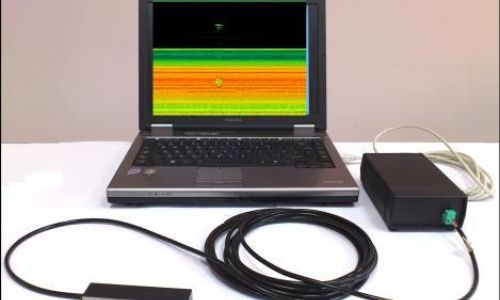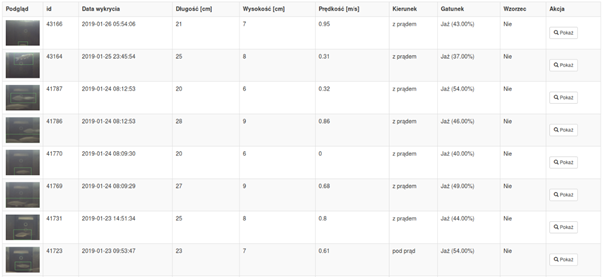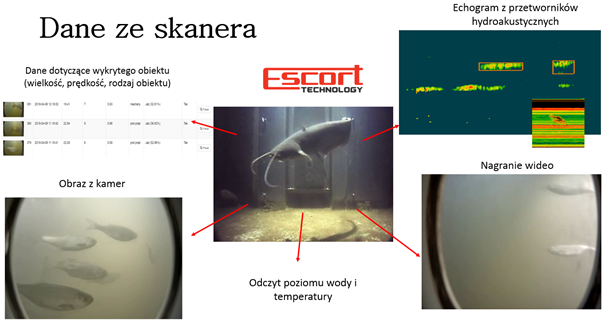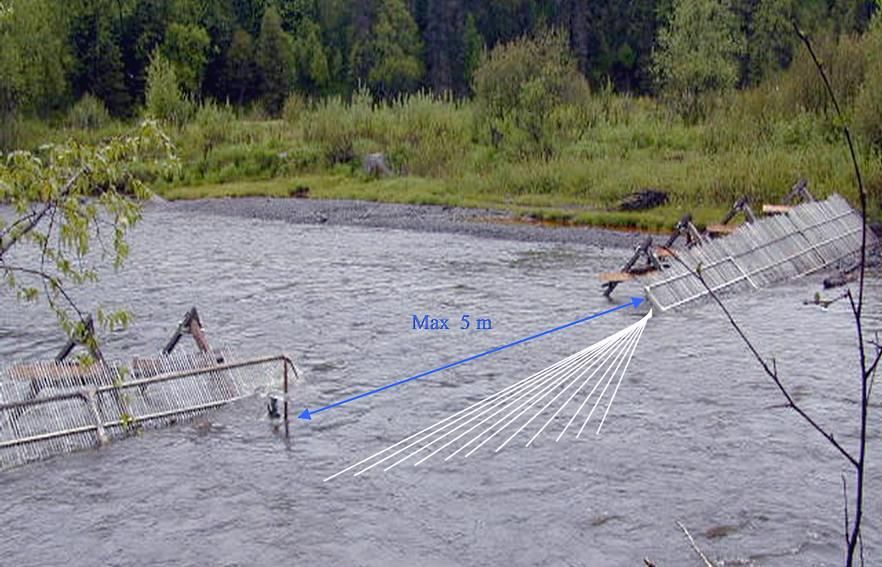HSMR Hydroacoustic Fish Monitoring System

HSMR Fish Monitoring System is a complete solution enabling 24-hour monitoring of fish migration on rivers, lakes and watercourses, without limiting the freedom of their movement and introducing a stressful factor.
The device is easy to install even in harsh environmental conditions, providing good readings wherever other systems do not work. The system also has practical applications for determining the biomass increment in breeding tanks.
The monitoring of fish movement in the fish pass is based on the work of the HSMR hydroacoustic system installed in the fish pass channel. The hydroacoustic system is additionally equipped with a set of optical cameras together with the possibility of using infrared light and a white light system with white light. In order to protect the cameras against algal accumulation, additional illumination emitting the third band of UV radiation (UV-C) is additionally installed.
The fish monitoring system operates on the basis of the reverse side scanning sonar principle, in which the acoustic head is stationary and the fish are scanned as they flow through a narrow acoustic beam. HSMR is able to detect even very small fish, 3 to 4 centimeters in length passing through a fish pass, without the need for additional chambers or other guidance systems.


The system is equipped with the Fisher App software enabling automatic recognition of fish species based on fish images registered in natural conditions and patterns prepared on their basis. The application allows you to view the fish detected by the system, sort the records or search for fish based on the species, as well as manually assigning detection to a specific group.
An example of data presentation on the computer controlling the operation of the HSMR system
The fish monitoring data recorded on a regular basis on the PC allow obtaining the following information:
- Number of fish flowing in the right and left direction;
- The speed of movement of each fish in both directions;
- Length of flowing fish;
- The approximate height of flowing fish;
- Approximate contours of flowing fish;
- Temperature of water;
- Option: remote data transfer via GPRS radio modem
- Cooperation with the optical camera: the image from the camera is synchronized with the echogram and is recorded on one computer. During echogram reproduction, it gives the possibility of parallel observation of the recorded image from the camera and the echogram image corresponding to the currently observed situation in the fish pass;
The HMSR system can be delivered in both stationary and portable versions.
The main features of the HSMR portable system:
- It can be installed anywhere, without the need to create costly constructions. The only requirement to ensure the correctness of the tests is rigid mounting of the transducers.
- No need to restrict freedom of movement of fish. HSMR allows you to monitor the flow of fish without unduly limiting their natural freedom of movement.
- The hydroacoustic system works autonomously in parallel with the optical camera. The cooperation with the optical camera is synchronized in time.
- High detection of small fish. The HSMR is able to detect even very small fish flowing through the fish pass, providing a full picture of the underwater situation.
- Low power consumption (power consumption of a laptop computer). This allows monitoring fish even where there is no access to the mains. For proper operation of the system, a small generator or accumulator is enough.
- System operation does not depend on water transparency.
- A compact and portable research station of small size. A complete station with its own power source can easily be transported in the trunk of a small car.
The system allows for the monitoring of both individual fish and large shoals flowing through the acoustic beam. The maximum distance from the ultrasonic transducers: up to 5 meters.
The fish monitoring data recorded on a regular basis on the PC allow obtaining the following information:
- Number of fish flowing in the right and left direction;
- The speed of movement of each fish in both directions;
- Length of flowing fish;
- The approximate height of flowing fish;
- Approximate contours of flowing fish;
- Temperature of water;
- Option: remote data transfer via GPRS radio modem
- Cooperation with the optical camera: the image from the camera is synchronized with the echogram and is recorded on one computer. During echogram reproduction, it gives the possibility of parallel observation of the recorded image from the camera and the echogram image corresponding to the currently observed situation in the fish pass;
For use on shallow passes or natural watercourses, transducers with a beam width V 20o x H 0.9o
On deeper passes- transducers V 40o x H 1.2o
Operational frequency: 800 kHz - 1 MHz
Place of transmitter installation: install in a place with laminar flow of water.
Avoid a place where there is a turbulent flow causing the water to aerate.
The basic set consists of:
- Acoustic head (a set of two transducers),
- procesora z zespołem nadawczo – odbiorczym
- Computer with dedicated software installed.


The basic HSMR-1 system set
The monitoring range depends on the location of the transducers and the depth of the water depth. The system is designed to monitor narrow channels or fish-pass from 1 to 5 m wide.
The field limiting the scope of monitoring is the effective width of the acoustic beam of ultrasonic transducers in the vertical plane. These fish are monitored, which flow through the acoustic beam emitted by the transducers.
In the case of wider shallow rivers, fish monitoring can be implemented using several HSMR-1 systems using a chain installation of several pairs of transducers at distances of 5 meters so as to cover the entire width of the current.
Ultrasonic transducers when working in water do not allow fouling of their surface. In the case of cooperation of the optical camera with a hydroacoustic system, in order to protect the camera lens against fouling during a long period of work in water, a source of pulsed ultraviolet light directed at the camera lens is used.
The low power consumption of the system makes it possible to monitor fish in field conditions without constant operator supervision.










